
Culture
19:34, 15-May-2019
Uzbekistan's Samarkand: A crossroad of cultures
CGTN
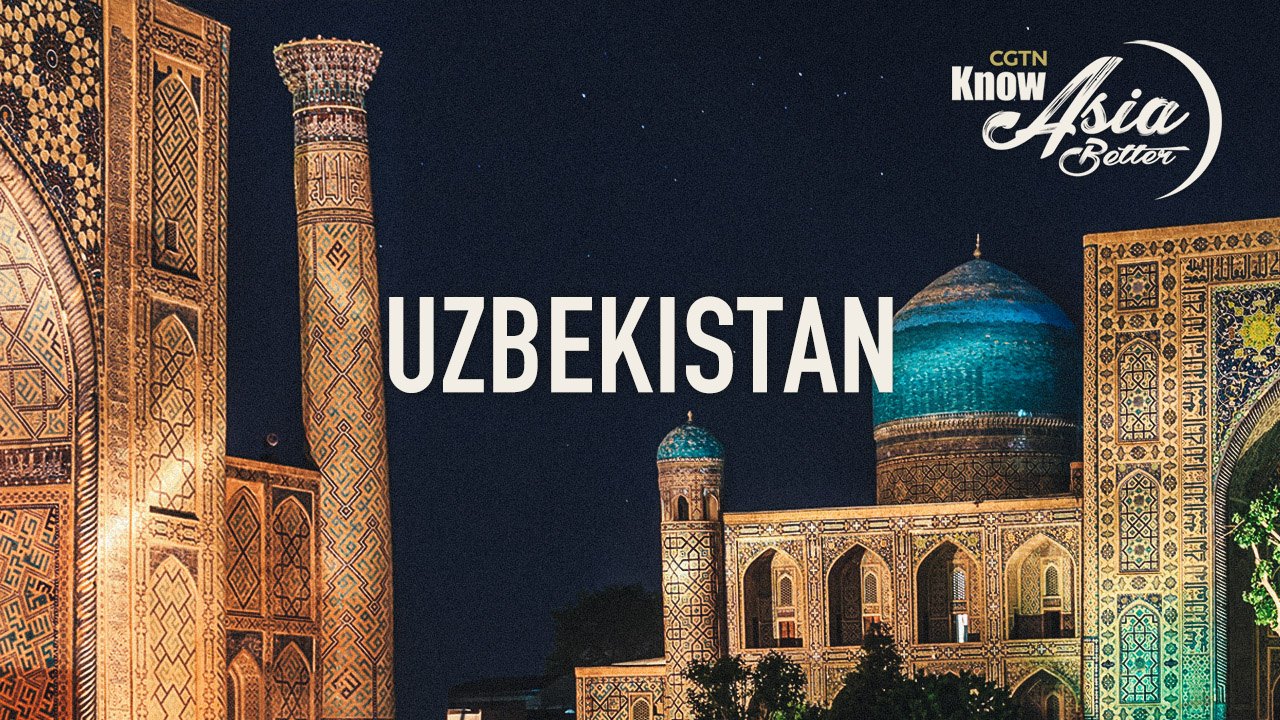
The historic town of Samarkand, located in a large oasis in the valley of the Zerafshan River, in the north-eastern region of Uzbekistan, is considered the crossroads of world cultures with a history of over 2,500 years, linking China, India and the Persian Empire.
As one of the oldest cities standing in Middle Asia, today's Samarkand is the country's second largest city. Samarkand was inscribed as UNESCO-World Heritage Site in 2001 as living monuments to these past interactions.
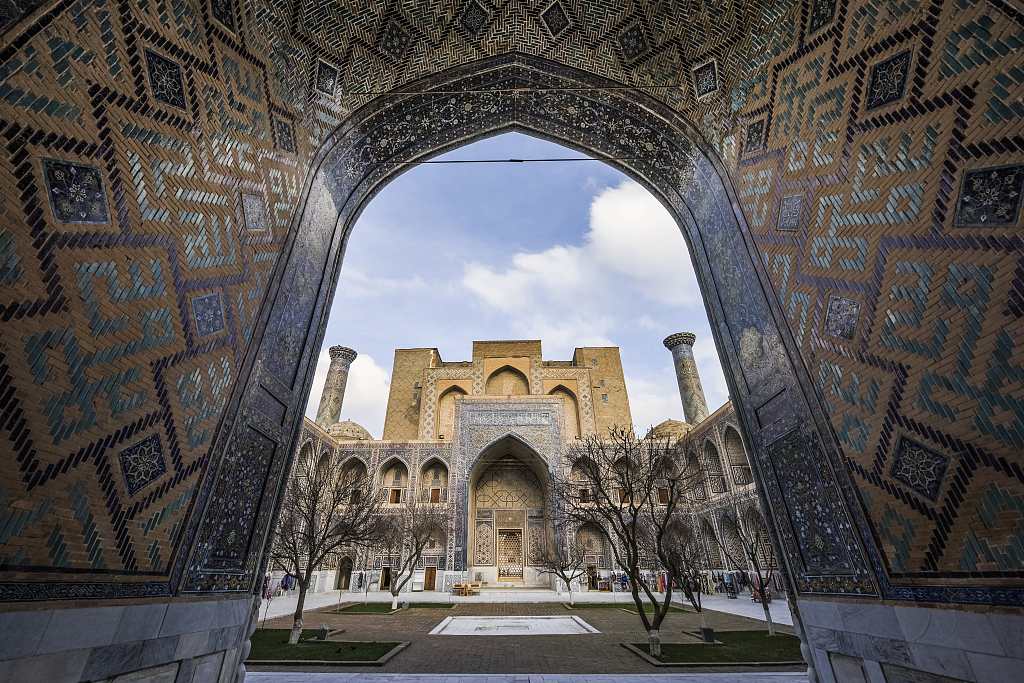
The Registan was a public square in Samarkand/ VCG photo
The Registan was a public square in Samarkand/ VCG photo
People of Sugda, famous for running businesses, built this city into a prosperous commercial and capital. UNESCO described Samarkand's most significant period was in the Temurid period "from the 14th to the 15th centuries, when it was capital of the powerful Temurid realm."
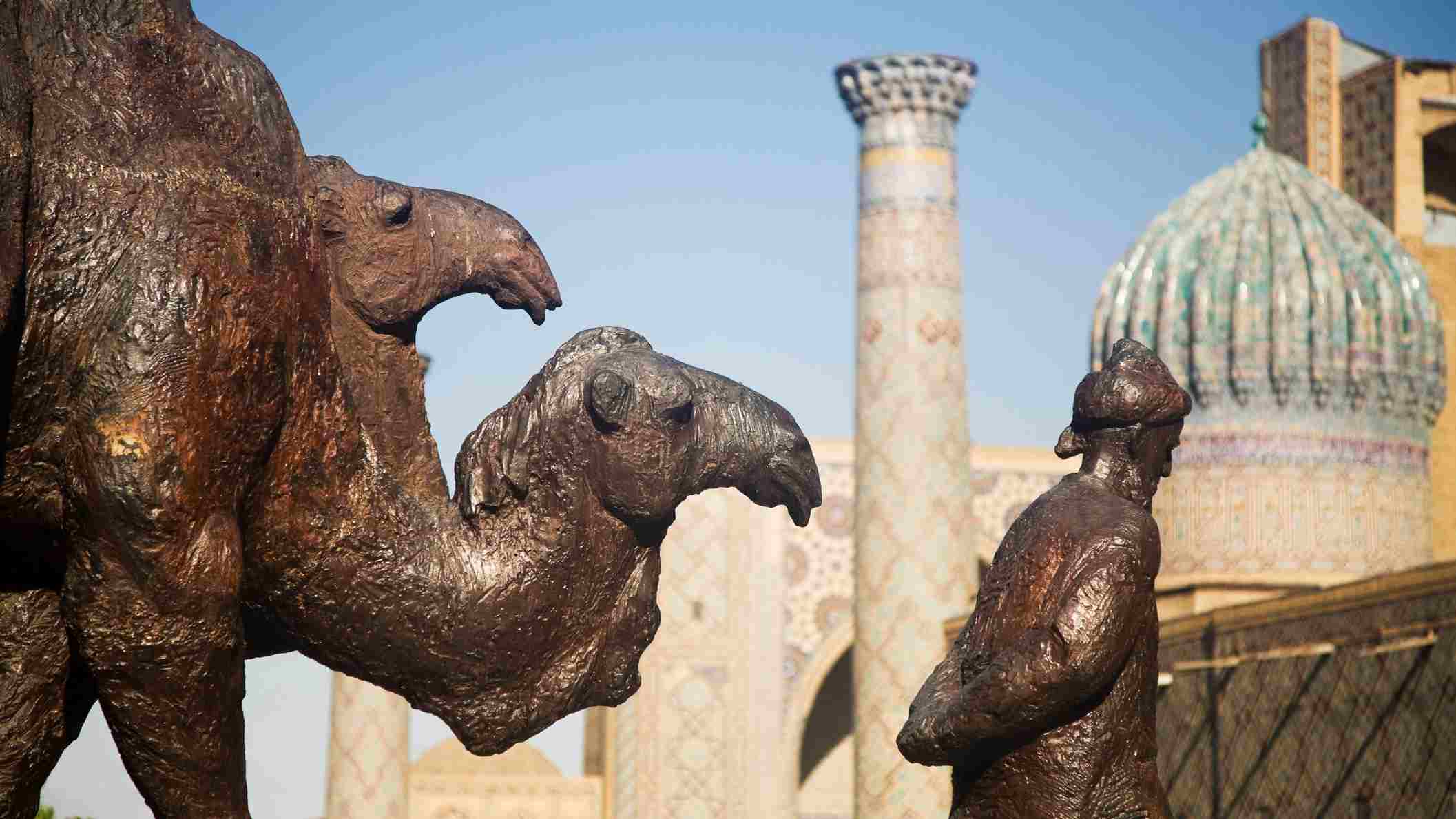
Statue of men leading camels outside mosque./ VCG photo
Statue of men leading camels outside mosque./ VCG photo
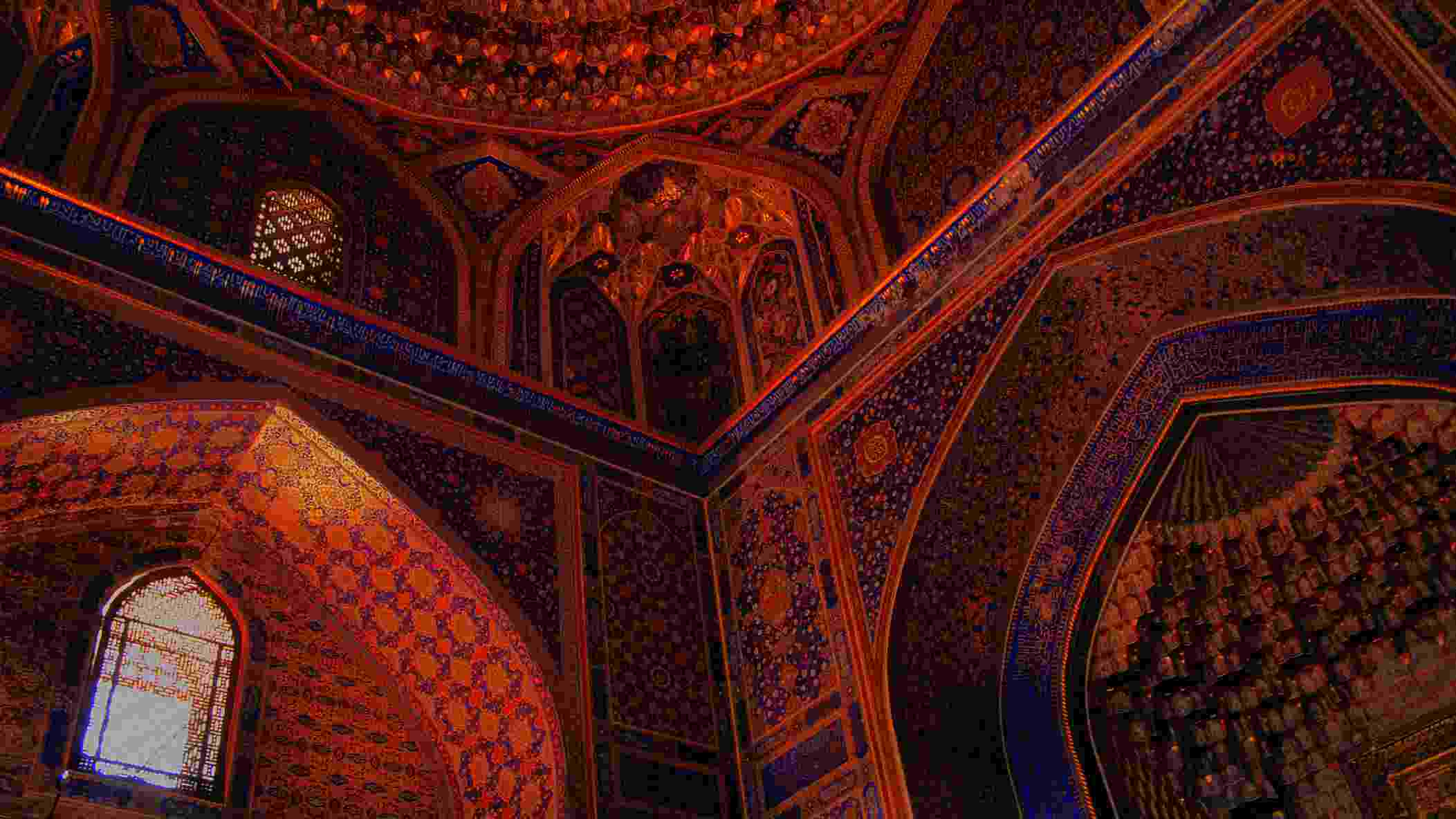
Inside look of Tilla Kara mosque./ VCG photo
Inside look of Tilla Kara mosque./ VCG photo
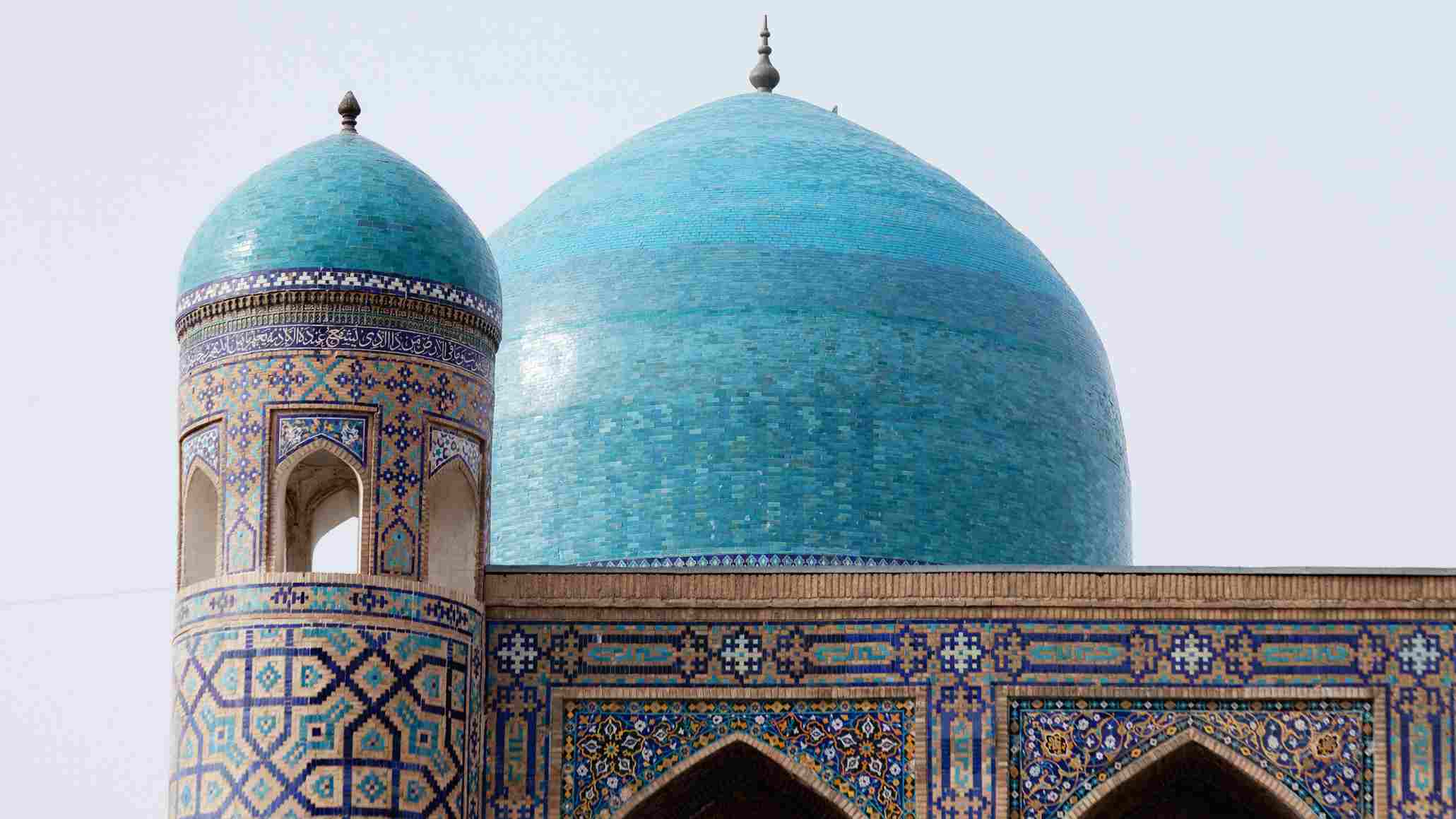
Architecture details on the roof of a mosque./VCG photo
Architecture details on the roof of a mosque./VCG photo
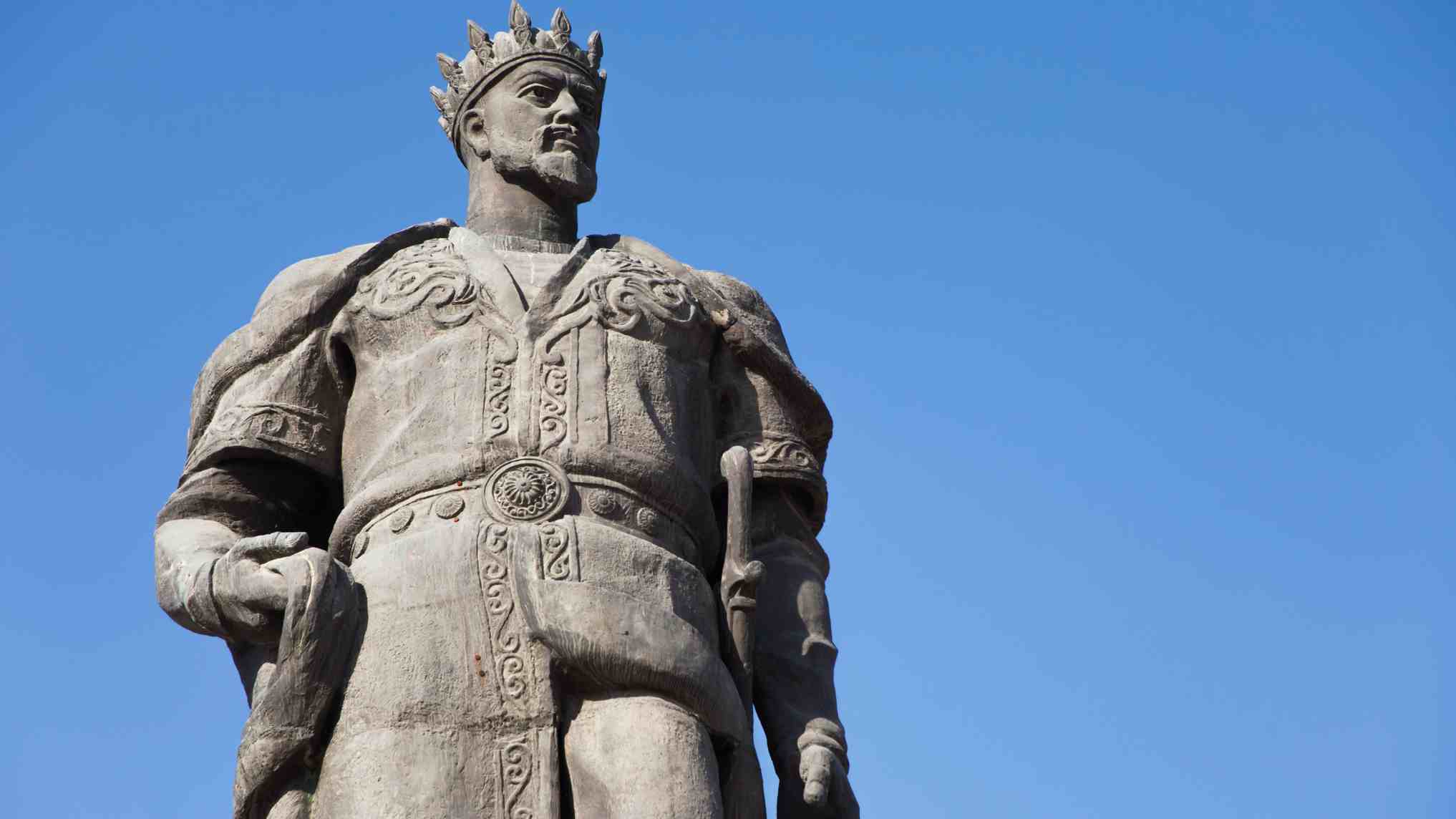
Statue of Amir Timur the Great in Samarkand./ VCG photo
Statue of Amir Timur the Great in Samarkand./ VCG photo
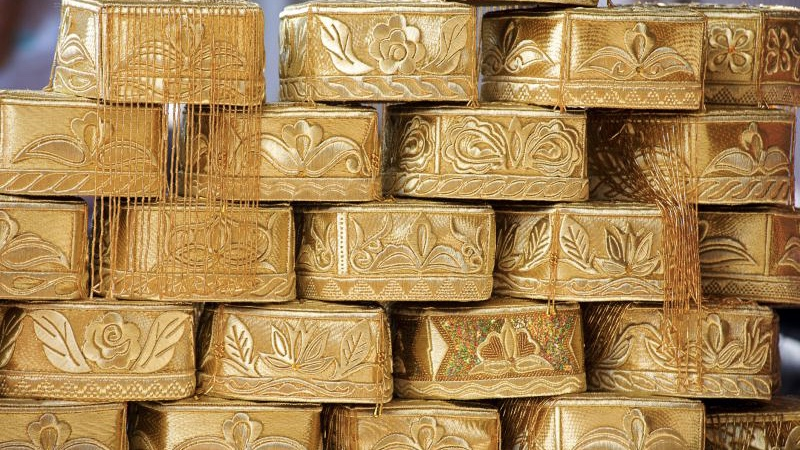
Selection of traditional handmade golden Uzbeki hats at Urgut market, Samarkad./ VCG photo
Selection of traditional handmade golden Uzbeki hats at Urgut market, Samarkad./ VCG photo
Around 140 BC, Zhang Qian, a royal emissary, left Chang'an, capital of China during the Han Dynasty. He traveled westward on a mission of peace and opened an overland route linking the East and the West, now known as the Silk Road.
Through these routes, Chinese silk, porcelain, lacquerwork and ironware were shipped to the West, while pepper, flax, spices, grape and pomegranate entered China. Cooperation and civilizations blended through leading camel caravans and sailing treasure-loaded ships.
(cover image designer: Fan Chenxiao)
(with inputs from Xinhua News Agency)Previous

SITEMAP
Copyright © 2018 CGTN. Beijing ICP prepared NO.16065310-3
Copyright © 2018 CGTN. Beijing ICP prepared NO.16065310-3